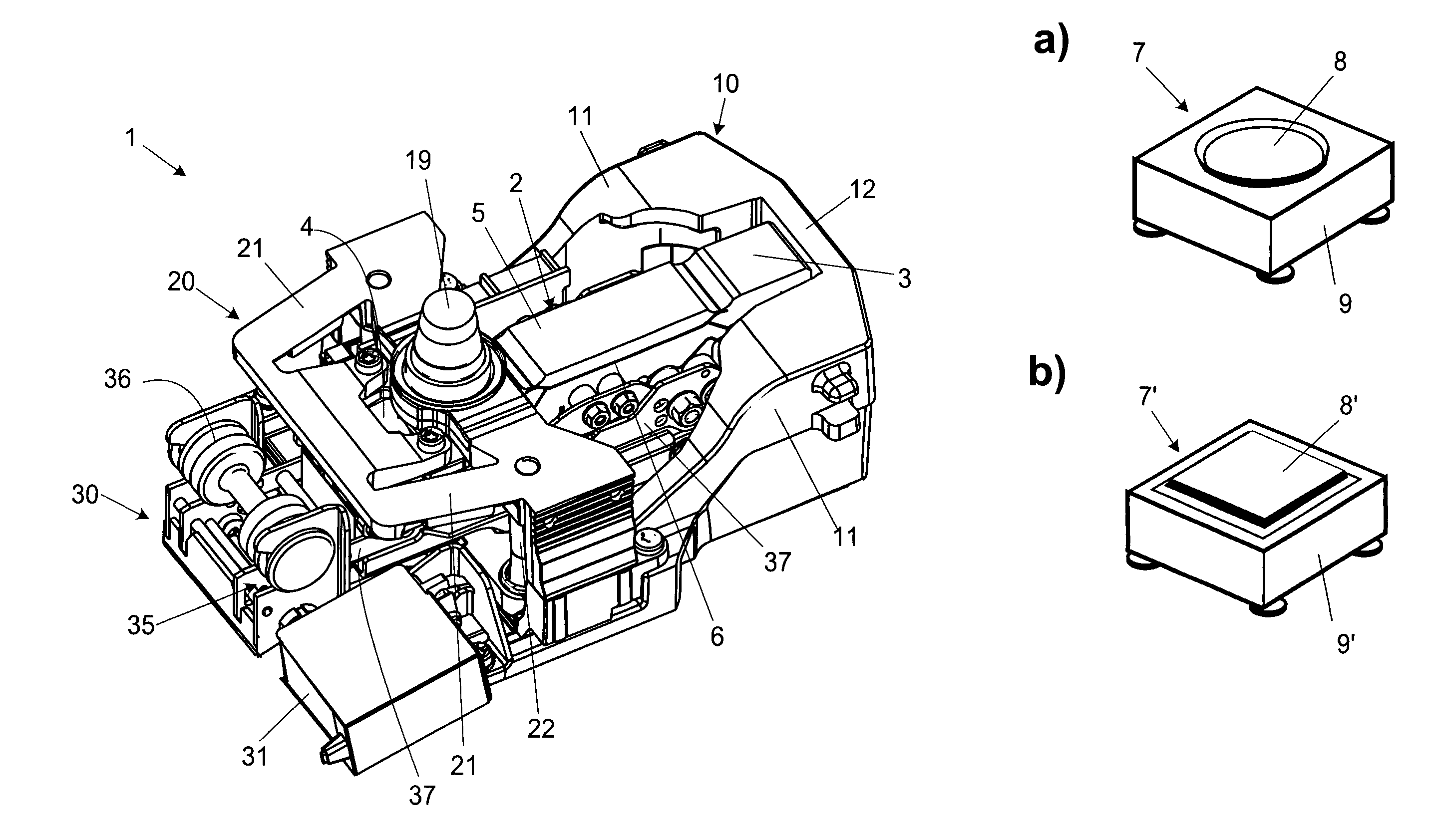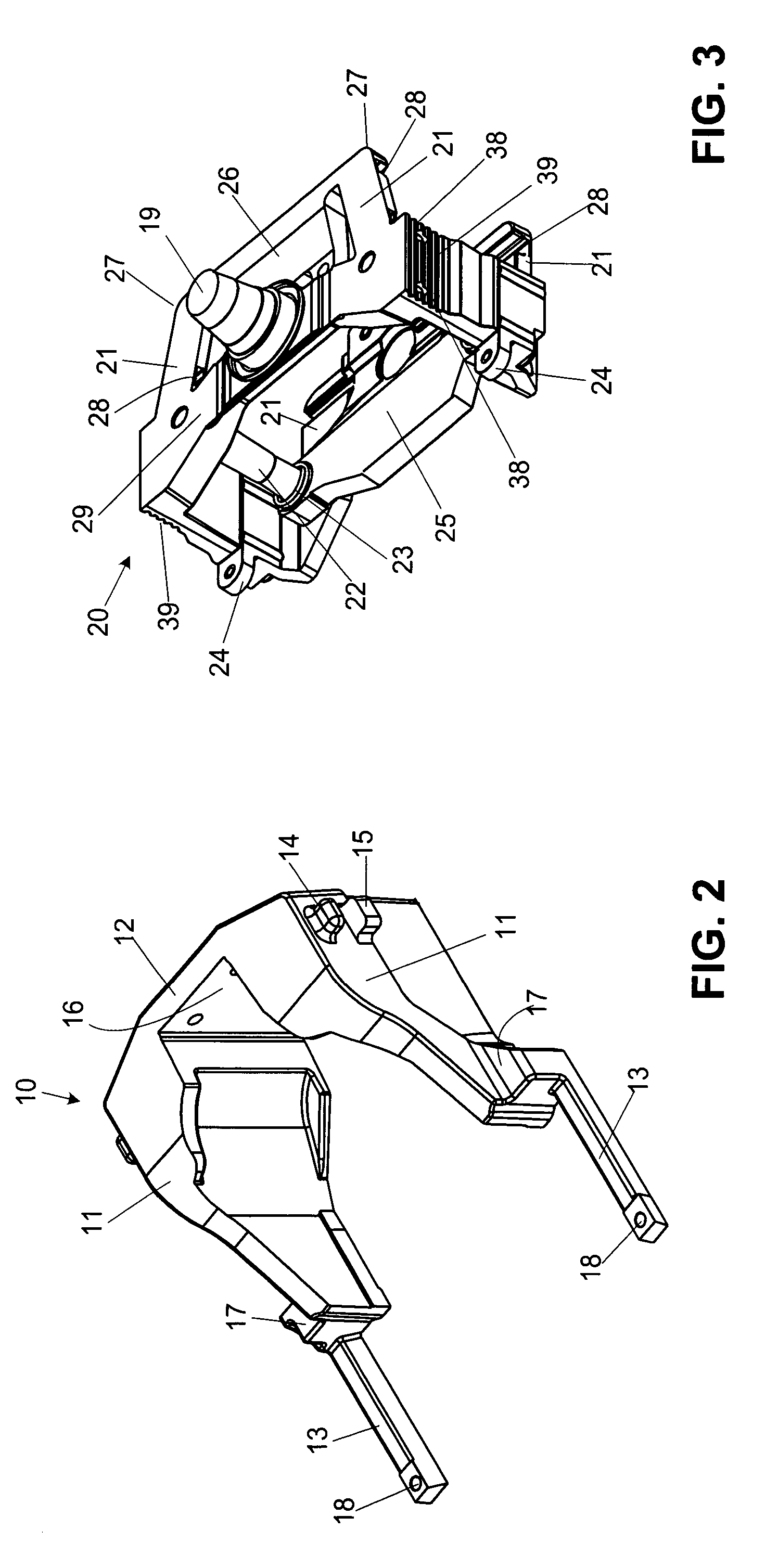Scale pan mount for single-point or multi-point mounted scale pan
a technology of scale pan and scale pan, which is applied in the field of weighing cell, can solve the problems of high production and inventory costs, large diversity in the overall number, and different measurement resolutions of different weighing cells, and achieves the effect of keeping the number of sub-assemblies or assembly modules low and high flexibility
- Summary
- Abstract
- Description
- Claims
- Application Information
AI Technical Summary
Benefits of technology
Problems solved by technology
Method used
Image
Examples
Embodiment Construction
[0038]FIG. 1 gives a perspective view of parts of a weighing cell that are assembled to form a module which in the following will be referred to as weighing cell module and identified by the reference symbol 1. The preferred working principle for the weighing cell module 1 is electromagnetic force compensation. In addition to electrical and electronic components, the weighing cell module 1 includes a force-transfer mechanism 2 with a parallel-guiding linkage in which a stationary parallelogram leg 3 and a movable parallelogram leg 4 are connected by a pair of guide arms 5 (with only one guide arm 5 being visible in the drawing). The force-transfer mechanism is an integral part of a monolithic material block wherein the essential parts, i.e., the parallelogram, the lever arrangement, the coupling elements and the fulcrum supports (not visible in drawing), are separated from each other by material-free areas in the form of thin linear cuts 6 that traverse the material block in the dir...
PUM
 Login to View More
Login to View More Abstract
Description
Claims
Application Information
 Login to View More
Login to View More - R&D
- Intellectual Property
- Life Sciences
- Materials
- Tech Scout
- Unparalleled Data Quality
- Higher Quality Content
- 60% Fewer Hallucinations
Browse by: Latest US Patents, China's latest patents, Technical Efficacy Thesaurus, Application Domain, Technology Topic, Popular Technical Reports.
© 2025 PatSnap. All rights reserved.Legal|Privacy policy|Modern Slavery Act Transparency Statement|Sitemap|About US| Contact US: help@patsnap.com



